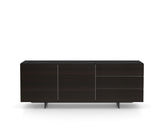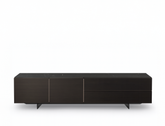Effortless Ways to Eliminate the New Mattress Smell

The arrival of a new mattress in your household usually signifies the beginning of more comfortable nights and rejuvenating sleep. The crisp, untouched condition of a new mattress injects a refreshing change into your bedroom, promising nights of blissful sleep. However, this excitement is often accompanied by a potent chemical scent emanating from the mattress. This guide delves into the reasons behind this new mattress smell and offers practical solutions to alleviate it, ensuring your transition to better sleep is as smooth and pleasant as possible.
Understanding the Source of the New Mattress Smell
The distinct smell of a new mattress originates from the process known as off-gassing, which is the release of volatile organic compounds (VOCs) present in the mattress materials. This phenomenon is not unique to mattresses; it occurs in various new products, including plastics, automotive interiors, carpets, and more. Mattresses, especially those that come vacuum-sealed or in a box, tend to retain these odors longer due to restricted airflow. The smell becomes noticeable once the mattress is unpacked and starts to expand.
Memory foam mattresses are particularly notorious for their strong off-gassing odor, though some spring mattresses can also emit a noticeable smell.
Are the Emitted Chemicals Harmful?
The off-gassing odors primarily stem from the polyurethane used in the foam and the adhesives. For most people, this scent, while possibly annoying, does not pose a health risk and dissipates over time. However, individuals with a heightened sensitivity to smells, those with asthma, or those prone to allergies might find the odor bothersome or even experience mild discomfort, such as nausea or allergy symptoms. It's crucial, especially for families with young children or those with health sensitivities, to consider the mattress materials carefully.
Duration of the Off-Gassing Period
The persistence of the new mattress smell varies greatly depending on the materials used. Mattresses composed of more chemical-based materials tend to retain their odor longer than those made with natural components. While some may only emit odors for a few hours, others could take days or even weeks to fully off-gas. The length of this period can also be influenced by the room's ventilation and the mattress's exposure to air.
Accelerating the Odor Removal Process
To minimize the inconvenience of off-gassing, here are several strategies to expedite the removal of your new mattress's chemical smell:
Ventilation is Key: Place your mattress in a well-ventilated area, opening windows and doors to facilitate air circulation. An elevated position can also enhance airflow around the mattress.
Utilize Fans or Humidifiers: In smaller or less ventilated spaces, fans or humidifiers can help circulate air and speed up the off-gassing process.
The Power of Baking Soda: Known for its odor-neutralizing properties, sprinkling baking soda directly onto the mattress, leaving it for a few hours, and then vacuuming it off can significantly reduce the smell.
Enzyme Sprays and Activated Charcoal: While enzyme sprays can tackle odors without staining (test first), bowls of activated charcoal placed around the room can absorb odors without direct contact with the mattress.
Physical Manipulation: Gently pressing or even lightly jumping on the mattress can help release trapped gases, though direct exposure to the smell may require periodic breaks for fresh air.
Mattress Covers for Immediate Use: If you need to sleep on your mattress immediately, a mattress cover can act as a barrier against the smell, allowing it to dissipate unnoticed.
Choosing the Right Mattress
When selecting a new mattress, consider the potential for off-gassing odors, especially if you are sensitive to smells or have health concerns. Latex, innerspring, or hybrid mattresses generally emit fewer odors compared to memory foam options. Opting for mattresses with minimal memory foam or those known for lower off-gassing can enhance your immediate sleeping experience.
Transitioning to a new mattress is an exciting time that heralds better sleep and comfort. While the initial off-gassing period may require some patience, the tips provided here can help mitigate the smell, allowing you to enjoy your new mattress sooner. Remember, a little effort goes a long way in ensuring your sleep environment is both comfortable and welcoming.
Frequently Asked Questions (FAQs)
How long should I air out my new mattress before using it?
- The airing-out period varies by mattress type and material but generally ranges from a few hours to several days for optimal results.
Is it safe to sleep on a new mattress immediately?
- While it's generally safe, those sensitive to odors or chemicals might prefer to wait until the off-gassing process has sufficiently diminished.
Can off-gassing odors cause health problems?
- For most people, the odors are not harmful. However, individuals with sensitivities, allergies, or respiratory conditions should take extra precautions.
What are the best mattress types for minimal off-gassing?
- Latex, innerspring, and hybrid mattresses tend to have fewer off-gassing odors compared to memory foam mattresses.
Can I speed up the off-gassing process?
- Yes, ventilation, use of fans, applying baking soda, and physical agitation of the mattress can help expedite the off-gassing process.
By following these guidelines, you can ensure that your transition to a new mattress is as smooth and odor-free as possible, paving the way for many nights of restful sleep.
Looking for a mattress solution in Singapore? Check out Prestige Affairs catalog of premium latex, pocketed spring, and memory foam mattresses.







